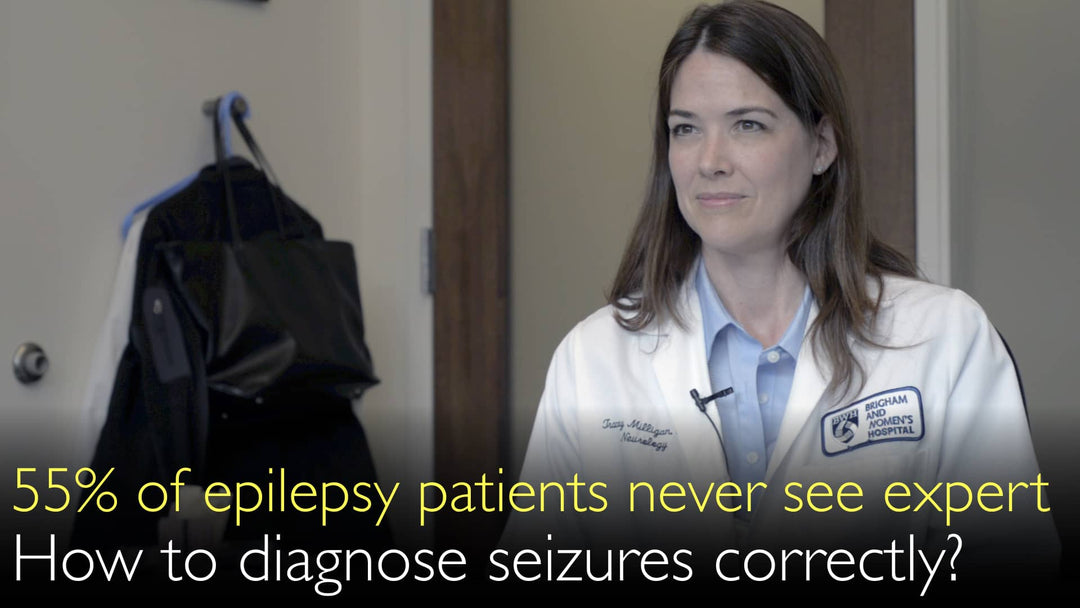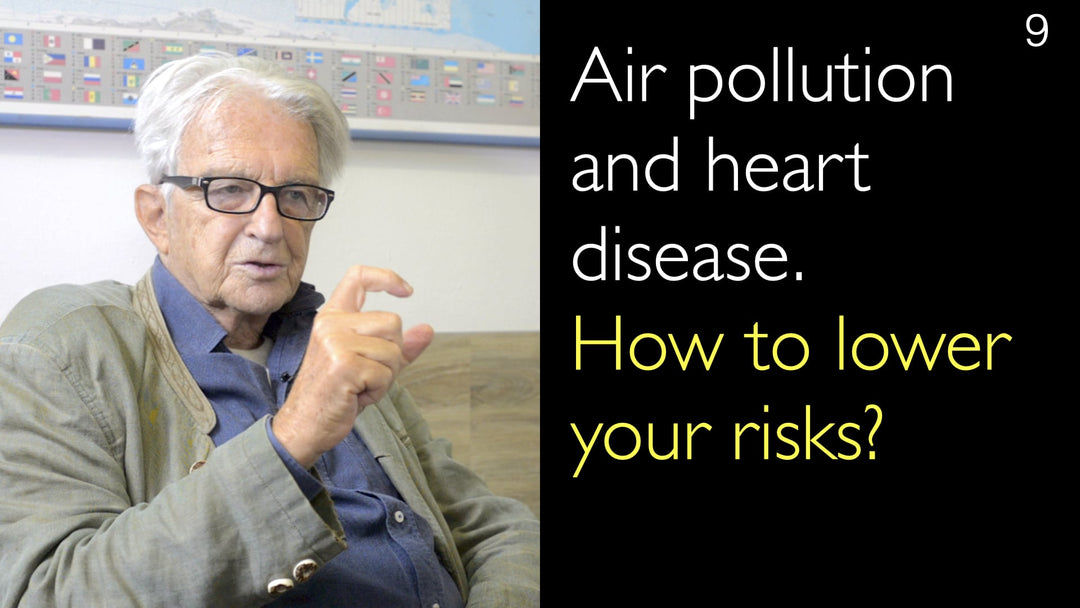Leading expert in maternal-fetal medicine, Dr. Yves Ville, MD, explains cytomegalovirus risks in pregnancy. He details how CMV transmission occurs and outlines a clear screening strategy. Dr. Yves Ville, MD, discusses the high 10% infection risk for specific pregnant women. He advocates for first-trimester serology testing to identify recent primary infections. Antiviral treatment with valacyclovir can reduce fetal transmission risk from 30% to 10%. Dr. Ville also covers diagnostic procedures like CVS and amniocentesis for confirming fetal infection.
Cytomegalovirus in Pregnancy: Risk Factors, Screening, and Prevention
Jump To Section
- Cytomegalovirus High-Risk Patient Profile
- CMV Transmission and Hopeless Primary Prevention
- Secondary CMV Prevention with Antiviral Treatment
- CMV Screening Controversy and Guidelines
- Primary vs. Non-Primary CMV Infection Differences
- Practical CMV Screening and Diagnostic Approach
- Full Transcript
Cytomegalovirus High-Risk Patient Profile
Dr. Yves Ville, MD, identifies a specific high-risk population for primary cytomegalovirus infection. The typical patient is a young woman with a high socioeconomic level. She often has a first child aged two or three years old. This child usually attends a daycare center while the mother works.
Dr. Yves Ville, MD, states this profile carries a prospective 10% risk of catching CMV during a second pregnancy. This represents an extremely high risk in perinatal medicine. Despite this known risk, no country currently advocates for universal CMV screening in pregnancy.
CMV Transmission and Hopeless Primary Prevention
Cytomegalovirus transmission occurs through multiple bodily fluids from infected children. Dr. Yves Ville, MD, explains that the virus is present in tears, saliva, urine, and feces. Approximately 80% of children in daycare centers excrete CMV in their urine.
These children can shed the virus for two to four years. This makes avoidance nearly impossible. Even careful hygiene practices often prove insufficient. Dr. Ville describes primary prevention as "hopeless" because partners can also become infected and transmit the virus to the pregnant woman.
Secondary CMV Prevention with Antiviral Treatment
Secondary prevention offers significant benefits for cytomegalovirus infection. Dr. Yves Ville, MD, emphasizes that early screening can identify recent primary infections. Treatment with valacyclovir can then dramatically reduce transmission risk.
Without intervention, the fetal transmission rate for primary CMV infection is approximately 30%. Valacyclovir treatment decreases this risk threefold, bringing it down to about 10%. This substantial risk reduction provides a strong argument for implementing CMV screening programs in early pregnancy.
CMV Screening Controversy and Guidelines
Dr. Yves Ville, MD, addresses the ongoing controversy surrounding cytomegalovirus screening. Health authorities often express concern about worrying pregnant women unnecessarily. However, Dr. Ville argues that well-educated women in high-risk categories want this information.
The challenge lies in outdated research polluting the current literature. Dr. Yves Ville, MD, states that studies older than four years should be disregarded due to inaccurate methodologies. Health committees often rely on this older data, creating barriers to implementing modern screening guidelines despite recent advances in understanding.
Primary vs. Non-Primary CMV Infection Differences
Cytomegalovirus infection presents differently than other perinatal infections like toxoplasmosis. Dr. Yves Ville, MD, explains that women can experience non-primary CMV infections even with prior immunity. The risk factors for non-primary infections differ significantly from primary infections.
Primary CMV correlates strongly with having a child in daycare. Non-primary infection appears associated with crowding and close contact with multiple children. Epidemiology varies by country—in some nations like China and Vietnam, nearly 100% of the population is immune, yet they still have 1-4.3% of babies born with CMV infection from non-primary maternal infections.
Practical CMV Screening and Diagnostic Approach
Dr. Yves Ville, MD, provides a clear practical approach for cytomegalovirus screening. Women planning pregnancy or already pregnant with another child should request CMV serology (IgG/IgM testing). A negative result means no prior infection, requiring careful hygiene during the first trimester with repeat testing at 15 weeks.
If both IgG and IgM are positive, further testing with IgG avidity can determine infection timing. Infections occurring within three months require consideration as high risk. Dr. Ville recommends valacyclovir treatment and either CVS at 13-14 weeks or amniocentesis at 16-17 weeks for definitive diagnosis. He prefers CVS as it provides certainty about first-trimester infection status.
Full Transcript
Dr. Anton Titov, MD: How do usually pregnant women get infected with cytomegalovirus? How is the first step suspicion of cytomegalovirus infection usually raised?
Dr. Yves Ville, MD: Right. So as I mentioned, there are two kinds of cytomegalovirus infection: non-primary and primary. What we know everything about is the primary cytomegalovirus infection. This is a typical sketch of the target for the virus: a young woman with a high socio-economical level, whose first baby is already two or three years old. Usually, this first baby is left in a daycare center because the mother works during the day.
This is the typical sketch; 99% of the cytomegalovirus cases are like this. This is a very high-risk population because these women with that profile, prospectively, when they enter their second pregnancy, have a 10% risk of catching cytomegalovirus. There is no such high risk anywhere else in perinatal medicine. And yet, no country in the world is advocating for screening for cytomegalovirus.
Even though this profile of women is known, and the cytomegalovirus circulates in the nursery. They get infected by their children. The virus is everywhere in the baby: in tears, in the saliva, urine, and feces. So it's very difficult to avoid contact, even if they are careful.
Also sometimes, which is a shame, they do know; they are very careful themselves, and they ask the husband to do the job. And then the husband is not immune, gets cytomegalovirus, and then contaminates the mother. So it's hopeless primary prevention.
What has been shown recently is that secondary cytomegalovirus prevention is also efficient. So if you screen early, and you get aware of a recent primary infection, valacyclovir—that I mentioned treating infected fetuses—you give to the mother, and you decrease the risk of transmission threefold. Instead of 30%, you go down to 10%. So it's another argument in the recent months or years to advocate for cytomegalovirus screening.
But when you advocate for screening in pregnancy, especially recently, there is a lot of controversy. "You're going to worry women for nothing." If I'm 35 years old, I'm well educated and well off. I've got my first baby in a daycare center. I want to know if I have a 10% risk of getting this nasty infection, I think.
Dr. Anton Titov, MD: What is the right way to go about cytomegalovirus? Should the kids, the first child, be screened regularly or the husband or only the pregnant woman?
Dr. Yves Ville, MD: Only the pregnant woman needs cytomegalovirus screening. The child will have this cytomegalovirus virus. 80% of children in a daycare center pass CMV in their urine. 80%. And when they do pass the CMV in their urine, they do it for 2, 3, 4 years. There's no point in screening children for cytomegalovirus. Only the pregnant woman needs cytomegalovirus screening.
The effort is the first trimester. Again, the big step forward is that we've shown that after the first trimester, cytomegalovirus doesn't matter. Screening for cytomegalovirus by the serology? Our research program focuses now on non-primary cytomegalovirus infection because there is no marker currently of non-primary cytomegalovirus infection. And it's hard for pregnant women. So that's important.
Dr. Anton Titov, MD: Is there any new possibility that it will be included in any screening guidelines, or there isn't?
Dr. Yves Ville, MD: We've been pushing for this for years. The latest cytomegalovirus screening offer was two years ago, and it was not accepted by the health authorities. I think it's a big mistake now. But things are moving so fast.
When you question health authorities, they convene independent committees to look at the problem. Then they look at the literature. And the literature on CMV—you can put in the trash bin everything that is older than four years. Because everything older than that will be a fable of things that are not accurate, that are mixing up different things.
So the literature is polluted by the old studies. And still, those committees do not want to look only at recent research series because they need to have a deeper view. After all, they don't know anything about the cytomegalovirus problem. So it's hopeless.
Dr. Anton Titov, MD: So cytomegalovirus can happen again, which could be a secondary infection. It is different from toxoplasmosis, which, if somebody had it before, they wouldn't have it again.
Dr. Yves Ville, MD: Exactly. You can get a non-primary cytomegalovirus infection. The risk factors for cytomegalovirus are not the same. They probably need to be sorted country by country.
For example, in China, in Vietnam, in India, the number of babies—proportion of babies born infected with cytomegalovirus—it's about 4.3% and 1%. The same thing in France here, for example. But all of them are nearly born from non-primary cytomegalovirus infections in the mother because this population is immune, nearly 100% of the population nearly. But still, they do have the same rate of infection at birth.
Whereas France, Holland, Great Britain, it's about 50/50. So, for these countries, it's different. We run a cytomegalovirus program at the moment with Vietnam. We need to find cytomegalovirus markers that can identify non-primary cytomegalovirus infection also early in pregnancy.
Whether this is a primary or non-primary cytomegalovirus infection, the clinical problem is early in pregnancy, not afterward. So we're making progress. All these recent advances have occurred within three, four years.
Dr. Anton Titov, MD: So if a pregnant woman or a woman who is planning pregnancy and already has a child is seeing this conversation, what should she do?
Dr. Yves Ville, MD: She should ask for cytomegalovirus serology (IgG/IgM testing). If she's got a negative serology, no IgM, no IgG, she should be careful for the first three months. Then she should check once more at about 15 weeks. If she's still negative for cytomegalovirus, she doesn't need to worry about it. Cytomegalovirus can happen and it's no problem.
In the first trimester, when she checks, we find IgM and IgG—not IgM alone, IgM alone is nothing—IgG and IgM. That means she had a recent infection. You can be a bit more precise by asking for IgG avidity, which is a characteristic of the IgG. You sort the old antibodies from young antibodies, so to speak.
And the IgG avidity will tell you if cytomegalovirus infection happened more than three months ago or less than three months ago. If it was less than three months ago, then she has to be considered as a high risk. She has to be put on valacyclovir.
And then she could have either a CVS [chorionic villi sampling] at 13 weeks, just at the end of the first trimester, or an amniocentesis at 16 or 17 weeks. I do encourage people to do that earlier, so 13-14 weeks of pregnancy, because if the CVS is negative at 13-14 weeks, you are sure there is no risk to the embryo.
If you do an amniocentesis at 17 weeks, and it's positive, you don't know if cytomegalovirus infection just happened or if it happened before 14 weeks. So you still have this uncertainty of a month. So I'd rather be sure in the first trimester, just at the end. And if CVS is positive, then it's again the antiviral treatment for this cytomegalovirus.
Dr. Anton Titov, MD: What if the laboratory results return positive for IgG but not IgM antibodies?
Dr. Yves Ville, MD: That means she is immune from before the pregnancy. Therefore, in theory, she's potentially exposed to non-primary cytomegalovirus infection. But in non-primary cytomegalovirus, we don't find the same risk factors. It's not associated with the first child in the daycare nursery, etc.
Most likely, the non-primary cytomegalovirus is an effect of contamination through crowding. We found that in women, where you examine their way of life, they are much closer to many children and many people in the same house. So crowding is probably a risk factor more than anything else for non-primary cytomegalovirus, at least in France.
But that has to be looked at epidemiologically in each country because we don't know much about non-primary cytomegalovirus infections.







